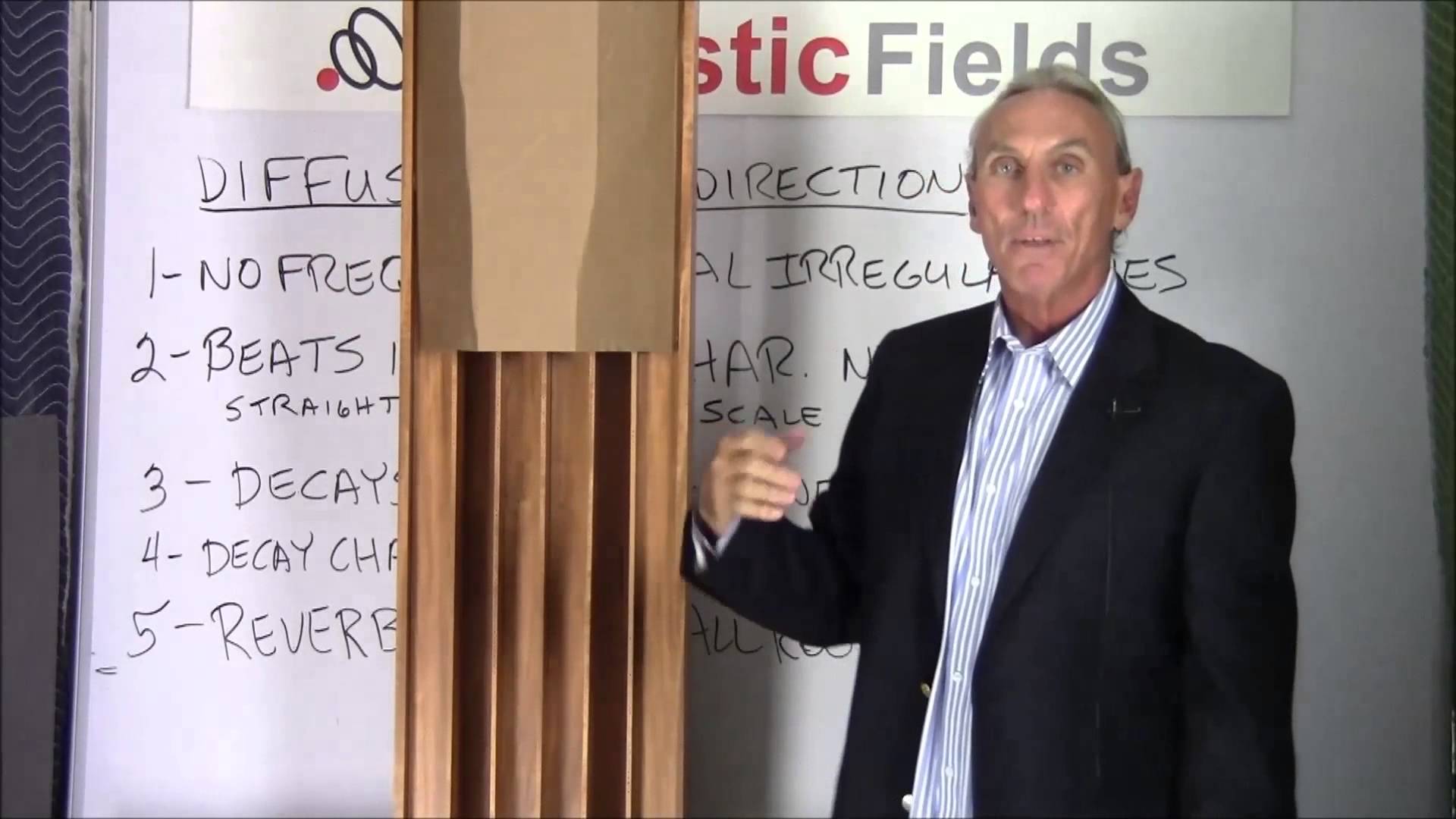The myth of sound diffusion is widespread. Have you noticed that in the sales literature of every large acoustic company they have a something labeled a diffuser? In most of the cases, it is the labeling of a piece of foam or a sound absorbing panel with an odd shape that is termed a diffuser.
The product labeled a diffuser is in name only, not function. To be labeled a diffuser, and to be able to function as a diffuser, takes a special design that will actually provide a diffuse sound field in Your listening rooms, home theaters, or professional recording studios. To create a diffuse sound field in a room requires five main variables be satisfied.
In this video, I examine the common myths about sound diffusion and the false labeling of acoustic products by manufacturers. I look at the difference between sound diffusion and sound redirection devices and show you how to tell the differences between them.
Sound Diffusion Field
To create a diffuse sound field, which is the task of a true diffuser, the end result you hear in your room must first, have no spatial irregularities within the diffused sound field. There cannot be any frequencies that are left out, covered, or masked by any poor design criteria of the diffuser so that the acoustic field created in the room is spatially balanced.
The decay characteristics must be smooth and no beats interfering in the smooth decay curve. Each frequency must decay on its and of its own volition. The decay rates must be perfectly exponential which means they are straight lines on a log scale and the character of the decay must be the same for all frequencies. The reverberation times throughout all physical positions in the room must be the same, no exceptions.
Labels Mean Nothing
How can a foam wedge do all of this? How can a half round attached to the walls of your room provide and satisfy all of these variables and create a real honest diffuse sound field? How can wood blocks staggered throughout the room be a true diffuser? I mean I’ve even seen some examples where plants have even been called sound diffusers! NB: I don’t believe the plants know this.
Sound Redirection
Most of these devices called sound diffusers are really sound redirection devices. Sound energy strikes them and is redirected to another place within the room. It is redirected into that room space depending on which angle it struck the sound redirection device at. It is angle of incident equals angle of refraction. What direction it comes into the device at, it leaves in the opposite direction 180 degrees.
Redirection is not sound diffusion. Sound diffusion does not redirect anything, it takes reflected energy in and then redistributes it across a chosen frequency range in a series of much smaller reflections, if you will. It spreads those smaller energies out into the room in the case of quadratic diffusion, it spreads the sound energy back into the room in a fan like array of sound.
In Summary
I hope this has cleared some confusion and I certainly didn’t mean to offend. I just want to give you the tools and information to make informed decisions. For too long a few bad eggs have perpetuated myths to make sales and I think enough is enough.
If you would like to learn more about room acoustics please sign up for my free videos and ebook by joining the mailing list here. I send room tuning tips and things for you to test in your room every Wednesday. They are easy to follow and will really help you enjoy more of your music.
Alternatively feel free to contact me directly at: 520 – 392 – 9486 MST or info@acousticfields.com. You can see more of my research and development story and why I started Acoustic Fields at: https://www.acousticfields.com/who-we-are/.
Thanks and speak soon
Dennis







